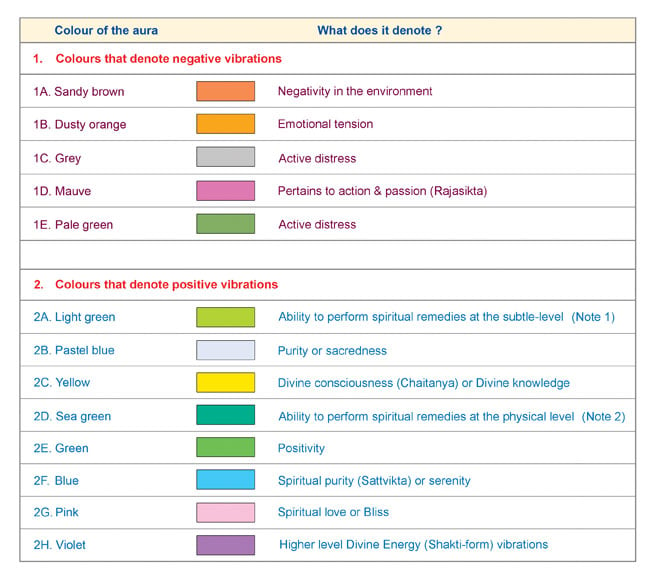Information useful in understanding the ‘PIP’
photos taken during the experiment conducted using ‘PIP’
(Polycontrast Interference Photography)’ technology and the observations
1. Introduction to ‘PIP’ technology
1A. The purpose of using scientific equipment or
technology to study the spiritual uniqueness of the samples of the experiment
To understand the extent of positive vibrations in a sample (an object, a premise, an animal or an individual), whether a sample is sattvik (Sattva-predominant) or not and whether it is spiritually beneficial, it is necessary to have the subtle perception ability. Saints who are at a high spiritual level have this ability and hence, can correctly identify the vibrations in every object. Devotees and seekers have faith in every word of Saints; they consider it to be final testimony. However, rationalists do not have faith in words; they ask for proof. Only when any aspect is proved through scientific analysis, meaning, proved using equipment, they believe in it.
1B. ‘PIP’ technology has the facility of displaying the positive
and the negative vibrations of objects through the medium of colours
Using this technology it is possible to see the coloured aura around a sample (an object, a premise, animal or an individual), which not visible to the naked eye. By connecting ‘PIP’ software with a video camera, it is possible to see the energy field of a sample in different colours. This program has the facility of interpreting the positive and the negative vibrations through the medium of colours.
2. Precautions taken during the experiment
A. During the experiment, a special room was used to take the ‘PIP’ photos. For the colour of the walls, roof etc. of the room to not affect the colours in the aura of the sample the walls, roof etc. were painted white.
B. During the entire experiment, the lighting in the room was kept uniform. For the outside air, light, heat to not affect the experiment in the room, the room was kept shut and isolated.
3. Information useful in understanding the ‘PIP’
photos and the observations made during the experiment
3A. Baseline reading (the original aura of the environment)
In the experiment, ‘PIP’ photos of a sample are taken to study the changes that it has made in the environment; however, the environment constantly keeps changing and hence, the ‘PIP’ photo of the environment in question before the commencement of the experiment has to be taken. This is termed as the ‘Baseline reading’. When the ‘PIP’ photo of a sample is compared with the ‘Baseline reading’ (the ‘PIP’ photo showing baseline aura of the environment), the difference caused by the sample on the environment can be ascertained.
3B. The principle underlying the phenomenon of change in the
proportion of the colours in the aura of the sample, shown in the ‘PIP’ picture
As compared with the proportion of the colours seen in the aura in ‘Baseline reading’ there is either an increase or decrease in proportion of the colours in the aura when the PIP picture is taken with the test sample during the experiment. This increase or decrease is in direct proportion to the vibrations associated with the respective colour emitted from the sample. For example, if a lot of Chaitanya is emitted from the sample, the extent of yellow colour in the aura increases; conversely, if the vibrations of Chaitanya are not emitted, or if its proportion is less as compared with the emission of other vibrations, the proportion of yellow in the aura decreases.
3C. Information about the colours seen in the aura
The colours seen in the ‘PIP’ pictures of the sample (or the individual) in the experiment demonstrate specific vibrations in the energy field of the sample. ‘Which colour represents which vibrations’ has been determined through the information in the manufacturer’s manual of the ‘PIP’ technology and hundreds of experiments conducted by the ‘Maharshi Adhyatma Vishwavidyalay’. It is as mentioned ahead.

Note 1 : Ability to destroy the negative vibrations of an object at the internal as well as external level and enhance the extent of positive vibrations
Note 2 : Ability to reduce or destroy the negative vibration of an object at the external level only and enhance positive vibrations
3D. Positive vibrations
Light pink, parrot green, bluish white, yellow, dark green, green, blue and violet colours from a ‘PIP’ picture determine progressively spiritually most beneficial to least beneficial colours. All these spiritually beneficial vibrations (colours) are collectively termed as ‘Positive vibrations’.
3E. Negative vibrations
Grey, pink, orange and colours from a ‘PIP’ picture determine progressively spiritually most distressing to least distressing colours. All these spiritually distressing vibrations (colours) are collectively termed as ‘Negative vibrations’.
3F. Seeing colours that represent superior level
positive vibrations in a ‘PIP’ picture is considered a good sign
In a ‘PIP’ picture, parrot green or bluish white are the colours which represent superior level positive vibrations. When these are seen, the proportions of yellow, dark green or green that represent moderate level positive vibrations reduce or these colours completely vanish. This is considered to be a good sign; because, then, the moderate level vibrations have been replaced by superior level vibrations.
3G. The uniqueness of the colours in a ‘PIP’ picture have
no relation to the spiritual uniqueness of the colours in reality
It is the manufacturers of the ‘PIP’ technology who have selected saffron and orange colours to determine negative vibrations. There is no relation whatsoever of this aspect with the actual spiritual uniqueness of those colours (for example, saffron represents sacrifice and renunciation).
